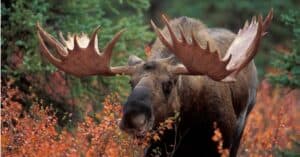
Each state in the United States has its own official animal symbols. These animals become officially recognized symbols of the state through legislative action. Lawmakers choose animals to represent their state based on how the animal reflects the state’s history, economy, geography, and culture. New York lawmakers have designated ten animals as official symbols of the state. Here is the list, along with the details of how, when, and why the animals were selected as official symbols of The Empire State.
1. State Bird: Eastern Bluebird
The eastern bluebird (Sialia sialis) was adopted as the state bird of New York in 1970. New Yorkers love this bird because it is one of the first birds to return each spring. When you hear this bird’s warbling song, it’s a sure sign that another cold New York winter is coming to a close.
The eastern bluebird is a gorgeous songbird that lives throughout the eastern United States (hence its name). It is about seven inches long with a 10-12 inch wingspan. The male features a bright blue back, a rusty-orange breast, and a white belly. The female is slightly larger than the male, with less vibrant coloration.

Female eastern bluebirds are slightly larger, while males have more vibrant coloration.
©Steve Byland/Shutterstock.com
The eastern bluebird’s numbers used to be declining, but the bird has made an impressive comeback. One main reason for the rebound is the ban on the DDT (Dichlorodiphenyltrichloroethane) pesticide in 1972. Insects make up the majority of the eastern bluebird’s diet. This pesticide had a crushing impact on the bird population. The chemical also had a devastating impact on many other U.S. birds, such as the bald eagle.
Some New York residents have set up nesting boxes to supplement the eastern bluebird’s natural nesting habitat of hollow tree cavities. There is a trail of bluebird boxes along U.S. Route 20 in New York that stretches for nearly 400 miles from the Pennsylvania state line to the border with Massachusetts.
Missouri joins New York as the only other state to honor the eastern bluebird as its state bird.
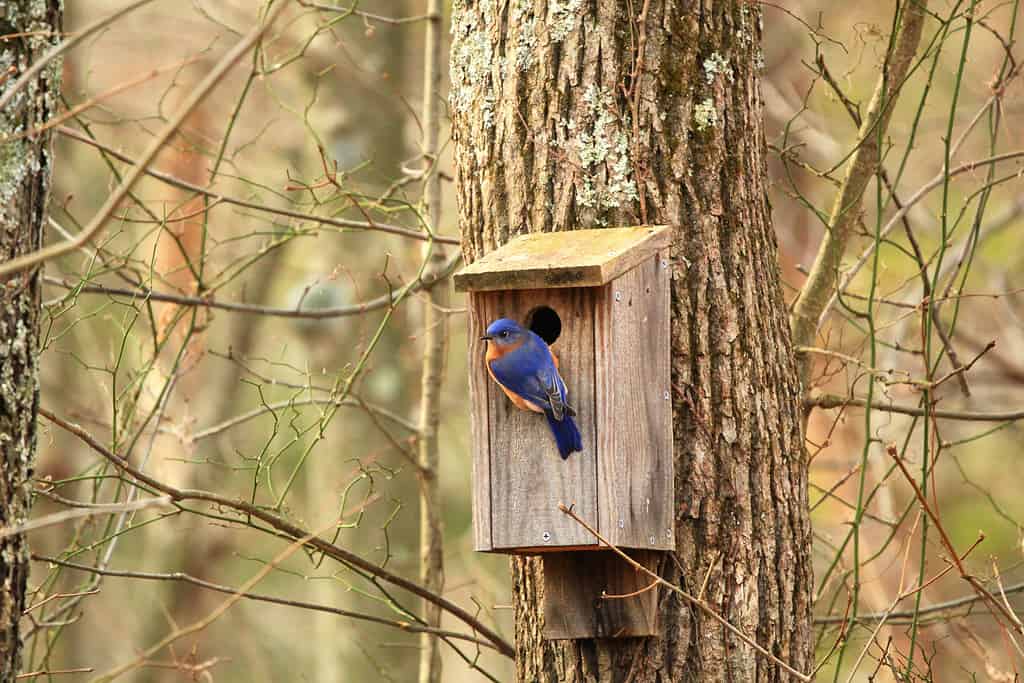
Nesting boxes are a great way for New Yorkers to help the eastern bluebird continue to thrive in their state.
©iStock.com/db_beyer
2. State Butterfly: Red Spotted Purple or White Admiral Butterfly
The Red Spotted Purple or White Admiral Butterfly (Limenitis arthemis) was chosen as the official state butterfly of New York in 2008. A poll of elementary school students across the state selected this specific butterfly. After the schoolchildren made their wishes known, state legislators made the designation official.
The Red Spotted Purple and White Admiral butterflies were once considered two separate species. The two forms have hybridized where their ranges overlap and have created various intermediate forms. This is why New York recognized both as the official state butterfly.
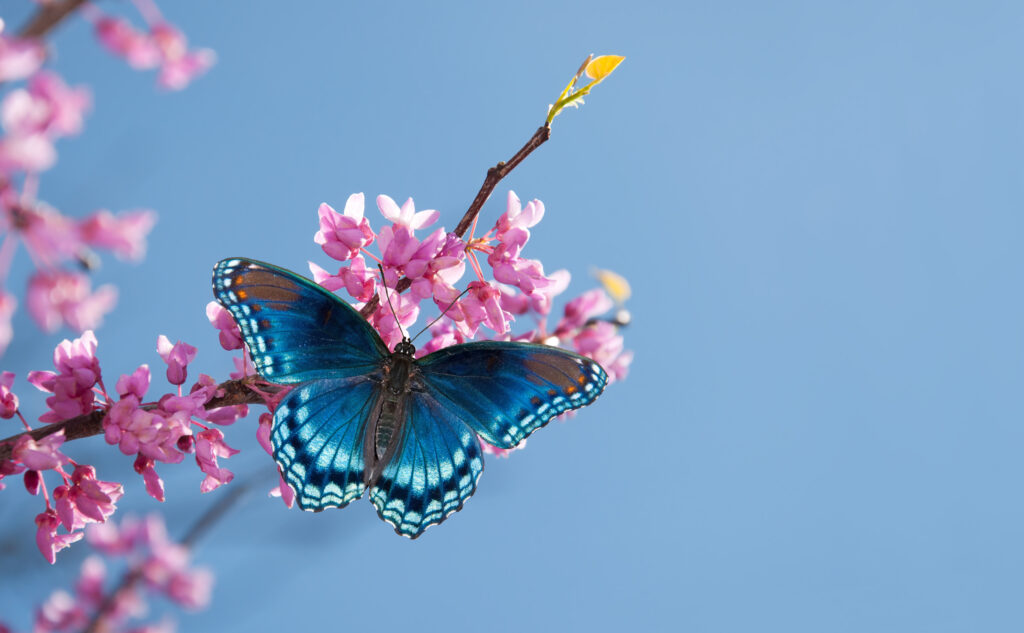
New York schoolchildren chose the Red Spotted Purple Admiral butterfly as the state’s official butterfly.
©Sari ONeal/Shutterstock.com
3. State Dog: Working Dog
Thirteen U.S. states have adopted a specific breed as their official state dog. Other states, however, have chosen official dogs based on criteria other than breed. Georgia’s official state dog is the “adoptable dog” to raise awareness of shelter pets. Colorado lawmakers also named shelter dogs and cats their official state pets. The Seeing Eye dog is the state dog of New Jersey in recognition of the vital service these dogs provide to their visually-impaired owners. And in 2015, New York lawmakers designated the Working Dog as the official state dog.
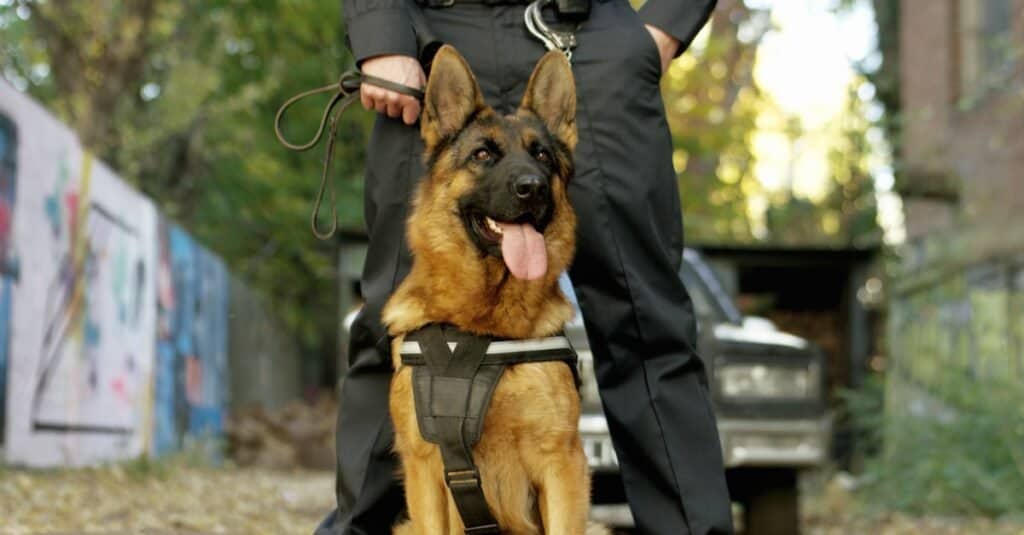
Police dogs are a vital type of working dog.
©VAKS-Stock Agency/Shutterstock.com
Assemblyman Matthew Titone (D) introduced the bill. He noted how inspired he was by all of the dogs working at Ground Zero following the September 11, 2001, terrorist attacks. In his proposal to name the working dog as the official state dog, Titone said, “It just sends a very loud and clear signal to the world that New York State honors and pays tribute to and acknowledges the hard work of dogs who are working dogs.”

Guide dogs provide invaluable assistance to people with disabilities.
©Africa Studio/Shutterstock.com
The New York State Senate defined “working dog” in its official legislation, saying, “working dog” shall mean: (a) a guide dog, a police work dog, a war dog, a hearing dog, a service dog, a working search dog, a therapy dog, or a detection dog as those terms are defined by section one hundred eight of the agriculture and markets law or any dog that has met such definition during its life; or (b) any dog that is trained to herd and/or protect livestock or control bird and/or wildlife populations and is actually or has been used for such purposes.”
4. State Fish (Freshwater): Brook Trout
The brook trout (Salvelinus fontinalis) was chosen as the official freshwater fish of New York State in 1975. “Brookies” or “speckles” generally grow around 10-12 inches long and weigh 1-2 pounds. Richard Beauchamp caught the state record brook trout on May 16, 2013. While fishing in the Silver Lake Wilderness Area in Hamilton County, Beauchamp landed a 22.6-inch brook trout that weighed 6 pounds 0 ounces!
The brook trout was selected for multiple reasons. First of all, the fish thrives in lakes and cool streams throughout New York. Secondly, it is an epicurean delight. Brook trout is one of the tastiest freshwater fish existing. Thirdly, it is one of the most popular fish for New York anglers. The state economy benefits significantly from this fish. And lastly, the fish needs exceptionally clean water to thrive. The official designation of the brook trout symbolized a commitment to the conservation of New York’s hundreds of lakes, streams, and waterways.
Along with New York, various species of brook trout have been chosen as state symbols in Georgia, Michigan, New Hampshire, New Jersey, North Carolina, Pennsylvania, Vermont, Virginia, and West Virginia.
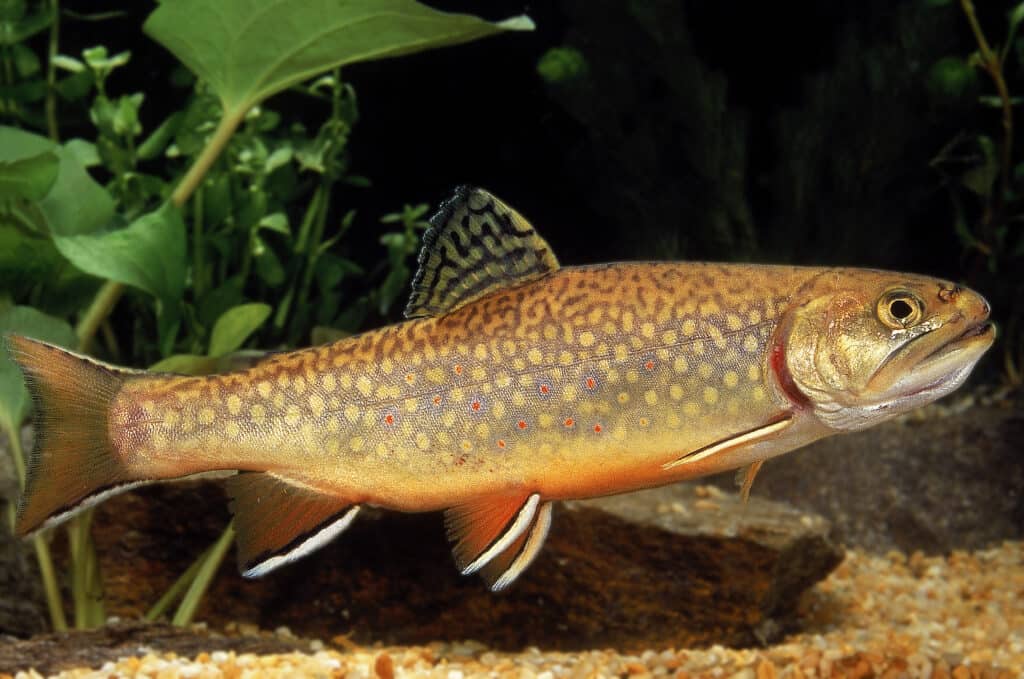
The Brook Trout has a speckled appearance, which is why some people call it the “speckle.”
©Slowmotion GLI/Shutterstock.com
5. State Fish (Saltwater): Striped Bass
The brook trout was the only official state fish of New York for more than 30 years. In 2006, though, it received some company when lawmakers designated the striped bass (Morone saxatilis) as the official saltwater (marine) fish of the state.
Commonly known as “stripers,” striped bass are silver with seven to eight black stripes. They are anadromous fish, meaning striped bass move from saltwater to freshwater to spawn. This seasonal migration brings striped bass into the tidal portion of the Hudson River and the coastal waters around Long Island.
The striped bass is a premier sportfish in New York. The state record striper was caught on May 14, 2014, when Eric Lester landed a mammoth 60-pound 0-ounce fish in the Hudson River!
Due to its ecological and economic importance, the striped bass was chosen as New York’s official saltwater fish.
The striped bass is the state fish in Rhode Island, Maryland, and South Carolina. Along with New York, it is the state marine fish in New Hampshire, New Jersey, and Virginia.

Striped bass are named for the black stripes running down their sides.
©slowmotiongli/Shutterstock.com
6. State Fossil: Eurypterid
The eurypterid (Eurypterus remipes) was a prehistoric sea scorpion that lived over 400 million years ago during the Silurian Age. It was an ancestor of the modern sea scorpion, horseshoe crab, and king crab. This prehistoric creature lived in the shallow sea that covered much of the land that we know today as New York State.
The eurypterid is a rare fossil worldwide. One of the largest concentrations of the fossil ever discovered was near Buffalo. New York State is one of the few places in the world where eurypterids are found.
New York legislators chose to honor this prehistoric animal that dwelled in the area long before humans did. In 1983, they named the eurypterid the official fossil of the state of New York.
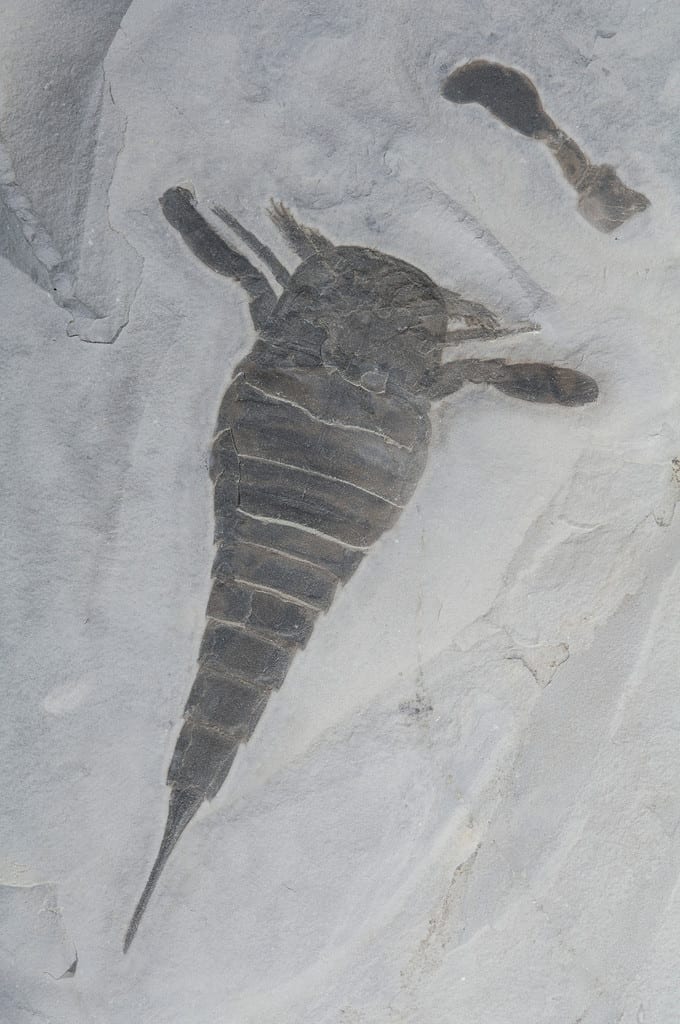
This detailed eurypterid fossil was found in New York.
©Breck P. Kent/Shutterstock.com
7. State Insect: Nine-Spotted Ladybug
There are around 450 species of ladybug in the United States. These insects, sometimes known as ladybird beetles, are more than just lovely-looking insects. They serve a vital ecological role that farmers and gardeners rely on.
Ladybugs feed on common pests that can destroy plants and crops. For instance, one ladybug can eat up to 75 aphids per day. They also feed on scale, mealybugs, mites, and other destructive insects. The ladybug is one bug we definitely want to see around the garden! Because of their importance to farms and gardens throughout the state, the nine-spotted ladybug (Coccinella novemnotata) was selected as the official state insect of New York in 1989.
While other ladybug species are thriving, the nine-spotted ladybug has severely declined in number. The reasons behind their decline are not clear, but it may be due to the introduction of non-native ladybug species. These species were introduced as a means of aphid control, but the introduction of these non-native insects may have pushed the nine-spotted ladybug out of its native habitat.
Delaware, Massachusetts, New Hampshire, Ohio, and Tennessee also recognize the ladybug as an official state symbol.

The nine-spotted ladybug has experienced a significant decline in numbers in recent years.
©Steve Bower/Shutterstock.com
8. State Mammal: North American Beaver
The North American beaver (sometimes called the American beaver or Canadian beaver) was designated as the official state mammal of New York in 1975.
The beaver is intertwined with the history of New York. Beaver pelts were in high demand in Europe in the 1600s. The pelts were used in hats and as trim on coats and garments.
To provide these sought-after beaver pelts to European markets, fur traders settled near the present capital of Albany to trade with Native Americans. Hunters and trappers also came, sensing there was much money to be made. The European attraction to beaver pelts was one of the main motivations for establishing Dutch and English trading posts in what would become New York.
Overhunting, coupled with habitat destruction, decimated the beaver population. Beaver numbers dropped from an estimated 60 million to virtually zero. But the beaver was not to be counted out.
The reintroduction of the beaver in the Adirondacks, along with strict bans on trapping, led to a remarkable comeback. The beaver is thriving in New York once again.
The beaver is the largest rodent in North America. Adult beavers can measure four feet long and weigh 40-70 pounds. These semi-aquatic mammals engineer dams that provide a home and give them shelter from predators. It has been said that other than humans, no single species can have a greater impact on a landscape than the beaver.
Oregon joins New York as the only other state to feature the industrious beaver as an official state symbol. A bit further to the north, the beaver is the national symbol of Canada.
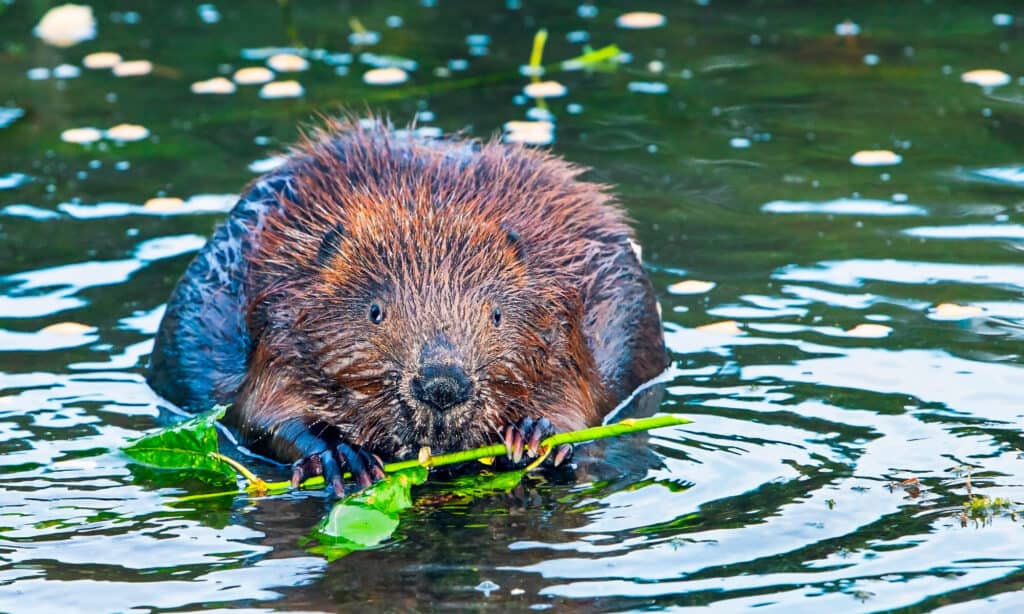
The beaver is the largest rodent in North America.
©SERGEI BRIK/Shutterstock.com
9. State Reptile: Common Snapping Turtle
In an effort to choose the state reptile, the common snapping turtle (Chelydra serpentina) was the winner in an election among children in New York’s elementary schools. It was a remarkably close vote, though. The vote was between four turtles. The common snapping turtle won the vote, but only beat out the painted turtle by 43 votes statewide. Talk about a razor-thin margin of victory!
After the children cast their votes, state legislators did the same. They voted on and passed the official legislation, declaring the common snapping turtle the official state reptile of New York in 2006.
Snapping turtles are found throughout New York. They are instantly recognizable with their large heads, long saw-toothed tails, and stocky legs equipped with large claws. Common snappers normally live in ponds, lakes, rivers, creeks, and marshes. They are especially drawn to shallow, slow-moving water with a muddy bottom.
Summer is the best time to see the common snapping turtle in New York. During the winter, the turtles dig into the muddy bottom of their aquatic home. They are rarely seen in New York from November to late March.
Their range is extensive, stretching from southeast Canada throughout the eastern and central United States, reaching all the way to Florida.
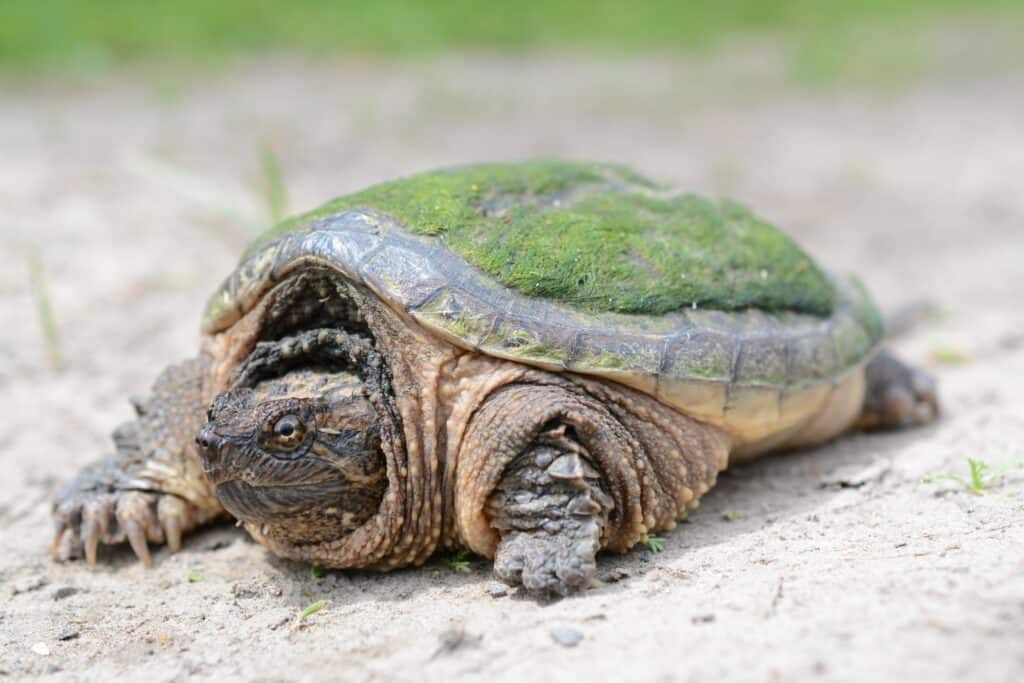
The common snapping turtle features stocky legs with large claws.
©Trevor Meunier/Shutterstock.com
Common vs. Alligator Snappers
Common snapping turtles can live from 35-45 years. The relative, the alligator snapping turtle, can live up to 100 years! Mature common snapping turtles can weigh up to 40 pounds, while adult alligator snappers can weigh up to 175 pounds.
Snapping turtles are omnivores. They can peacefully much on plants and aquatic vegetation but also “snap” up prey with their strong jaws. Snapping turtles have no teeth but a sharp beak similar to a bird of prey. As a result, snapping turtles eat invertebrates, small fish, and even small birds.
10. State Shell: Bay Scallop
We round out our tour of New York’s state animals with the state shell. The bay scallop (Argopecten irradians) was named the official state shell of New York in 1988.
Scallops are bivalve mollusks of the Pectinidae family. They are related to clams, mussels, and oysters.
The bay scallop’s name comes from the shallow bays where it lives. Bay scallops inhabit the Gardiners, Peconic, and Shinnecock Bays in New York.
Mature bay scallops move through the water by rapidly opening and closing their shells. Using a jet of water, the bay scallop can move several feet with a single flap of its shell. Bay scallops are filter feeders. They feed on phytoplankton that they filter from the water.
The bay scallop shell is the iconic shape that most people imagine when thinking of sea shells. The shells feature 13-22 ribs from the umbo (center point) of the shell.
Seafood lovers prize scallops for their delicately sweet flavor.
Fourteen other states have a designated official shell, but New York is the only one to adopt the bay scallop as its official shell symbol.
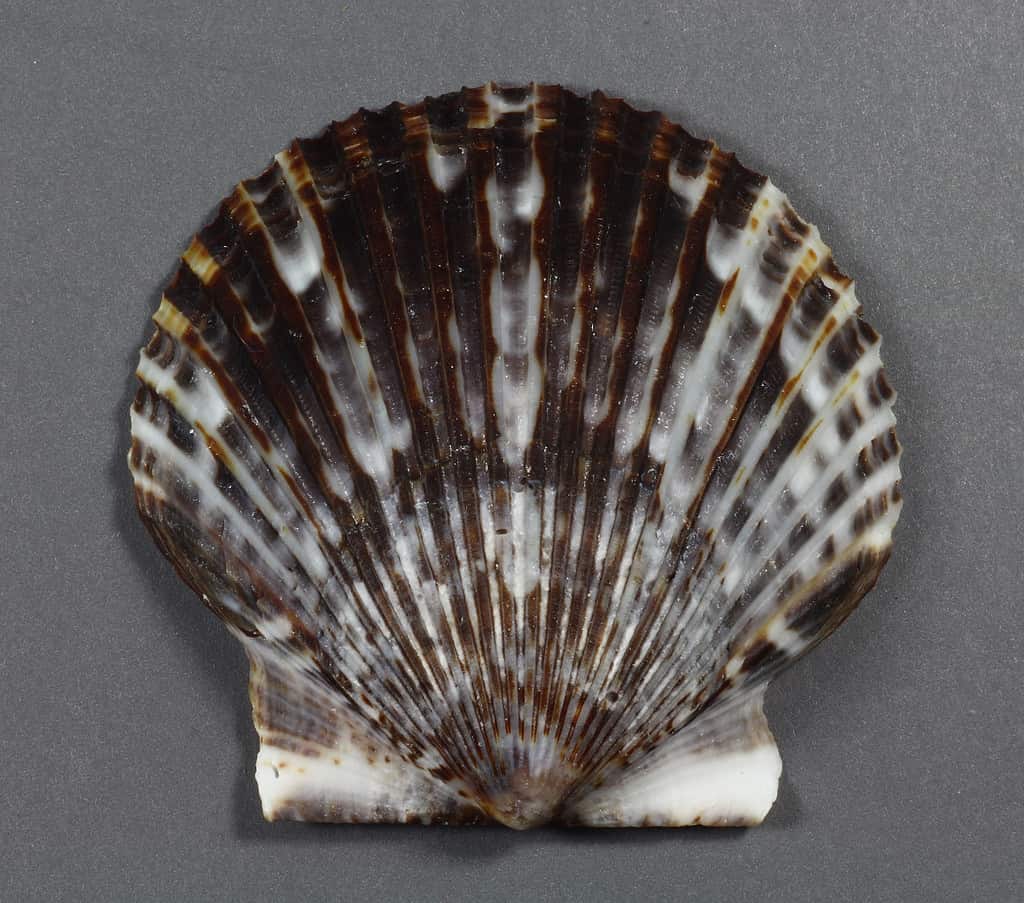
The shell of the bay scallop features the ribbed and rounded shape many people associate with a classic seashell.
©iStock.com/mccluremr
Summary of the 10 Official State Animals of New York
Here is a list of the 10 Official State Animals of New York:
| Rank | State Animals |
|---|---|
| 1 | State Bird: Eastern Bluebird |
| 2 | State Butterfly: Red Spotted Purple or White Admiral Butterfly |
| 3 | State Dog: Working Dog |
| 4 | State Fish (Freshwater): Brook Trout |
| 5 | State Fish (Saltwater): Striped Bass |
| 6 | State Fossil: Eurypterid |
| 7 | State Insect: Nine-Spotted Ladybug |
| 8 | State Mammal: North American Beaver |
| 9 | State Reptile: Common Snapping Turtle |
| 10 | State Shell: Bay Scallop |
Thank you for reading! Have some feedback for us? Contact the AZ Animals editorial team.






